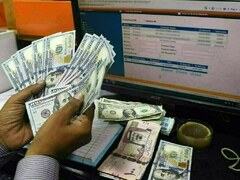Though the circular debt crisis, gas and power shortfall, inefficient management of resources and the CNG dilemma of late speaks volumes about the mourning state of the energy sector, the countrys ranking in a new index launched by the World Economic Forum is a reality check for those at the helm.
Pakistans position in the ranking lists resides in the bottom lot, and its energy architecture is also one of the weakest amongst its regional peers. The index is set to figure out the success of a countrys energy system in terms of promoting economic growth and development while being environmentally sustainable, secure and accessible.
Though there exist significant differences in countries energy systems, the index and the sub-indices offer focus areas for the developing countries of Asia including Pakistan.
Firstly, energy intensity, which is GDP per unit of energy use, stands at $5.78 per unit for the region compared to $7.14 for the overall average. For Pakistan alone, this figure is even lower and the key lies in making efficiency gains through better resource management.
Also, lack of focus on environmental stability and generation through renewable resources is a regional phenomenon. The regional scores fare way below those at the top of the index.
Finally, the access to energy in the country and the entire developing Asia is a big challenge owing to the increasing demand and bulging population. Where physical supply of energy is subject to constraints and risks, energy security, which involves trading relations and oil price volatility, has also become a challenge.
The index marks the beginning of a series that aims at assisting the policy makers to finally transition towards a new energy architecture - a more sustainable and secure energy system that bolster energy access and economic growth.
BR100
12,644
Increased By
241 (1.94%)
BR30
37,293
Increased By
1733.2 (4.87%)
KSE100
118,576
Increased By
1278.2 (1.09%)
KSE30
36,302
Increased By
462.9 (1.29%)




















Comments
Comments are closed.